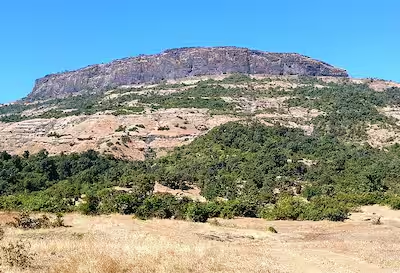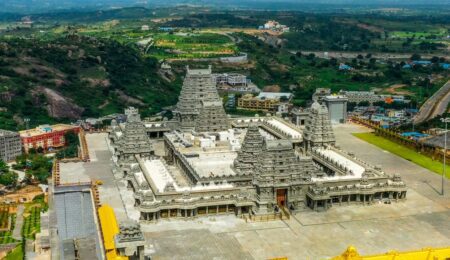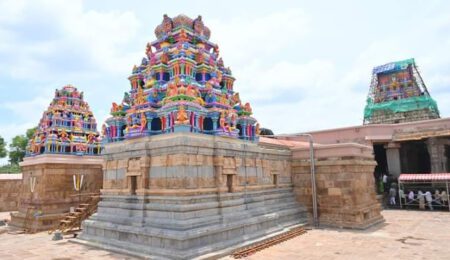Bhaskargad Fort: Hidden Sahyadri Treasure in the Shadow of Giants
Bhaskargad Fort
Bhaskargad Fort: Nestled within the Trimbakeshwar mountain range of the Western Ghats in Maharashtra, Bhaskargad Fort (also known as Basgad) remains one of the lesser-explored but historically and naturally significant hill forts near Nashik. Surrounded by its more famous neighbors such as Harihar Fort and Anjaneri Hills, Bhaskargad offers raw Sahyadri beauty, a rugged trek, and a rare sense of solitude for adventurers who wish to explore history amidst nature.
Overview
Bhaskargad Fort is located near Trimbakeshwar in Nashik District, Maharashtra. It sits at an elevation of approximately 1545 meters and is best known for its trekking trail, panoramic views, historical ruins, and uncrowded nature. The best time to visit is between October and February.
Historical Background of Bhaskargad
While not as extensively documented as forts like Rajgad or Sinhagad, Bhaskargad holds regional significance, especially in the Maratha period. It was likely part of a fortification chain used to monitor the surrounding trade routes through the Trimbakeshwar ranges and the Konkan region.
Locals believe the fort might have been in use during the Yadava dynasty and was later repurposed by the Bahamani and Maratha rulers. Its strategic location atop a steep, rocky cliff made it nearly inaccessible to enemies, which made it an ideal location for Shivaji Maharaj’s generals.
Geographic Location and Connectivity
Bhaskargad is located about 50 kilometers from Nashik and is usually accessed via the base village of Khodala or Fargane. The fort lies close to the Harihar and Brahmagiri ranges, making it an ideal weekend addition for those exploring Trimbakeshwar, Anjaneri, or Harihar.
Nearby landmarks include Harihar Fort, Anjaneri Hills, Trimbakeshwar Temple, and Vaitarna Reservoir.
The Trek to Bhaskargad Fort
Starting Point
Base villages include Fargane or Bhaskargadwadi. The trek distance is approximately four kilometers one way. It takes around two and a half to three hours to ascend and two hours to descend.
Trail Description
The trek begins with forest patches and slowly transitions into an uphill, exposed rocky terrain. The route is less frequented, so overgrowth may obscure the path during monsoon or early winter. The last stretch includes rock-cut steps and carved paths leading to narrow entrances. While not as steep as Harihar’s steps, Bhaskargad demands caution.
What to See at the Summit
Fortification and Ruins
You will find remnants of stone walls and bastions, an entrance arch structure (partially damaged), and small caves or rock shelters possibly used by soldiers.
Water Cisterns
Several rock-cut water tanks are present at the summit. These were essential for sustaining the fort’s occupants during long sieges.
Temple and Religious Elements
A small temple or shrine area dedicated to local deities exists near the top. Locals still visit the site during certain festivals.
Panoramic Views
From the summit, trekkers are rewarded with views of Vaitarna backwaters, Harihar Fort’s vertical rock face, lush green valleys, and the Darna and Godavari river basins.
Flora, Fauna and Biodiversity
Since the region falls within the Trimbakeshwar forest zone, Bhaskargad is surrounded by native Western Ghats vegetation. You can find wild medicinal herbs, karvi blooms, bamboo clusters, fig and teak trees.
Fauna includes Indian langurs, barking deer, peacocks, giant squirrels, monitor lizards, and a variety of bird species including raptors.
During the monsoon, the hills are carpeted with seasonal flowers, mushrooms, and mosses offering rich biodiversity.
Best Time to Visit
The best time to visit is from October to February when the weather is cool and clear. The summer months are hot and dry, while the monsoon season is lush but slippery and difficult to navigate.
Tips for Trekkers
Wear proper trekking shoes with good grip. Carry at least two to three liters of water and high-energy snacks. Mobile network is limited near the summit, so inform someone about your plans. Bring a trekking pole, headlamp, and first-aid kit. Avoid trekking solo if you are unfamiliar with the trail.
How to Reach Bhaskargad
By Road
From Nashik, take Trimbak Road and turn towards Khodala or Fargane base village. From Mumbai, drive via NH160 to Igatpuri and proceed toward Trimbak.
By Train
The nearest railway station is Igatpuri Station, around 60 kilometers away.
By Air
The nearest airport is Nashik Airport, approximately 65 kilometers away.
Local Legends and Cultural Ties
Bhaskargad holds religious importance for local communities. Oral legends link the fort to ancient sages who meditated in the caves. Certain villagers perform rituals on the hill during the Shravan month and Hanuman Jayanti.
Final Thoughts: Why Visit Bhaskargad
While Harihar Fort gets more attention for its challenging climb, Bhaskargad is a hidden gem waiting to be explored. It is perfect for trekkers seeking solitude, history buffs, nature photographers, bird watchers, and spiritual seekers.
Its untouched, offbeat nature makes it a peaceful and rewarding alternative to Maharashtra’s more crowded trekking destinations.
If you’re looking for your next trail off the tourist radar, Bhaskargad Fort might just be your hidden treasure in the Sahyadris.




Leave a Comment